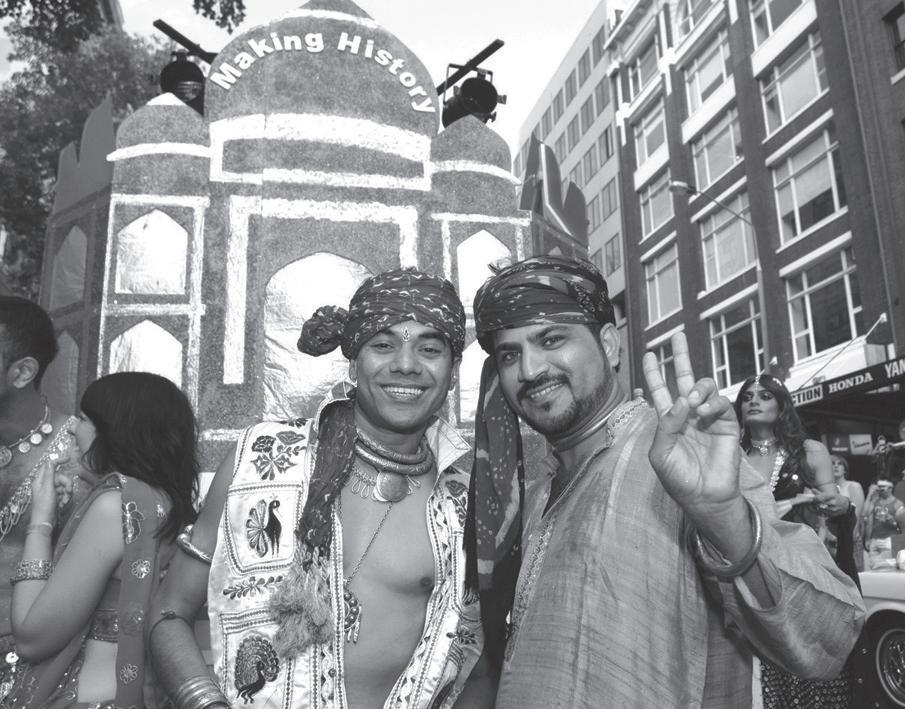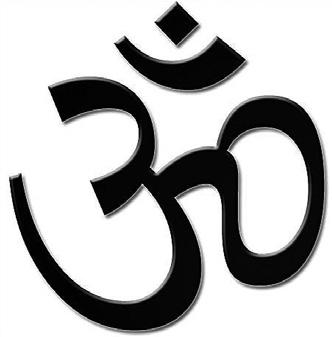
4 minute read
Trikone makes a mark at Mardi Gras
from 2010-03 Melbourne
by Indian Link
Even as the world tuned in to Sydney’s biggest gay, lesbian, bisexual and transgender Mardi Gras on the last week of February, a South Asian float with Bollywood numbers and dandiya beats left quite a mark at the parade.
A modest group of 75 South Asian gays and lesbians called Trikone Australasia, took to the streets to celebrate their homosexuality and send the message –it’s okay to be gay – to their home countries.
Trikone Australasia, the sister organisation of Trikone San Fransico, took part for the first time in the Mardi Gras, in an attempt to support South Asian gays and lesbians and encourage more people to come out of their closets, instead of living in fear.

“We want to create visibility and support South Asian homosexuals who do not want to come out in the open because they have family issues or are being forced to marry. The idea behind us taking part in Mardi Gras is to tell the world that a South Asian gay and lesbian community exists and we want to send a message back to India and other South Asian countries that it time to accept this reality,” Roopali Pandey, one of the directors of Trikone Australasia and a participant at the parade, told Indian Link

“They think we are evil or not normal. Most often, people believe that homosexuality is a lifestyle choice. However, it is not so. We are born gay and it is okay to be gay. We are not abnormal or evil,” she asserted.
Pandey, who immigrated to Australia over a decade ago, recounted the recent incident of an Indian from
Delhi who fled to Australia after he was threatened and beaten up by his family for being gay. “People in India are in denial. We are being hypocritical when we go ahead and marry the opposite sex despite realisation of our sexuality. Even Nepal has legalised gay and lesbian marriage. It is time India follows suit,” she observed.
According to the 26-year-old architect, historically the sub-continent has been tolerant to homosexuality and being gay is not been forbidden by Hinduism. She says that even the Kamasutra has dedicated a chapter on homosexuality.
Speaking on New Delhi’s recent decision to decriminalise gay sex and reverse its stand on the draconian Indian Penal Code 377, she said it was important for the entire country to follow in the capital’s footsteps.
“Last year’s decision was a massive victory and we believe in taking one step at a time. Now, activists and organisations are now taking the issue to the Supreme Court to decriminalise 377,” she said.
Trikone Australasia currently comprises of mainly Indians and the board’s five founding members are also Indians. However, the group is keen to reach out to the wider South Asian community and is hoping that more people would hear about them and join the 200-strong organisation.
When asked if their participation at the Mardi Gras may anger South Asians in Australia and back home, Pandey said, “We do not mind stirring up an issue as we want people to engage in a dialogue instead of refusing to accept us.”


The float, which had people dressed in Indian attire, had people also dancing to bhangra and other Indian songs during the 2.4 km parade on Oxford Street, lasting for over two hours. The group had practised its choreographed routine for over a few days before the parade. Trikone Australasia is hoping to take part in the parade every year and is determined to make the event better and bigger by the year.
Trikone Australasia is a registered non-profit organisation for lesbian, gay, bisexual, and transgendered people of South Asian descent. Founded in 1986 in the San Francisco Bay Area, Trikone is the oldest group of its kind in the world. South Asians affiliated with Trikone trace their ethnicities to Afghanistan, Bangladesh, Bhutan, Fiji, India, Maldives, Mauritius, Myanmar (Burma), Nepal, Pakistan, Sri Lanka and Tibet.
Through social and political activities, Trikone offers a supportive, empowering, and non-judgmental environment, where queer South Asians can meet, make connections, and promote awareness and acceptance of their sexuality in the society. Trikone actively works against all forms of oppression based on sexuality, race, gender, class, and other identities. The organisation hopes to make a difference for the lesbian, gay, bisexual, and transgendered people of South Asian descent living within Australia and work to remove all forms of discrimination through working with other social and political action organisations within Australia and in South Asian countries.
Preeti Kannan
Gayatri Mantra


Aum Bhur Bhuvah Suvah
Tat Savitur Vareynyam
Bhargo Devasya Dheemahi
Dhiyo Yo Naha Prachodayath
Oh God, Thou art the giver of Life, Remover of pain and sorrow, Bestower of happiness, Oh! Creator of the Universe, May we receive thy supreme sin-destroying light, May Thou guide our intellect in the right direction.
Referred to as the mother of all the Vedas, this simple but powerful mantra is considered as the foremost in Hindu Scripture. Quite simply it is a prayer to Savitrthe giver of light and life, to illuminate our intellect and thereby lead us along the righteous path.
It is dedicated to Gayatri, the Veda Mata or the fivefaced Goddess. As the personification of the Brahman, she is said to have domain over the five senses or pranas, and protects these five life-forces of those who chant the mantra. In her role as the protector, Gayatri is referred to as Savitri (feminine form of Savitr). Chanting the mantra removes any obstacles in our journey to knowledge and spiritual growth.
Psalm 23
The Lord is my shepherd, I shall not want; He makes me lie down in green pastures. He leads me beside still waters; He restores my soul. He leads me in paths of righteousness for His name’s sake.
Even though I walk through the valley of the shadow of death, I fear no evil; for You are with me; Your rod and Your staff, they comfort me. Surely goodness and mercy shall follow me all the days of my life; and I shall dwell in the house of the Lord forever.
This is one of the most popular of Psalms in the Bible and is a definition of the very faith and tenets of Christianity. It likens Christ as the shepherd, caring for His flock and leading them to the path of righteousness. His presence gives them strength and comfort, and His influence helps them lead good lives. It is a powerful passage, one that is reassuring, and yet compelling in its very simplicity.










